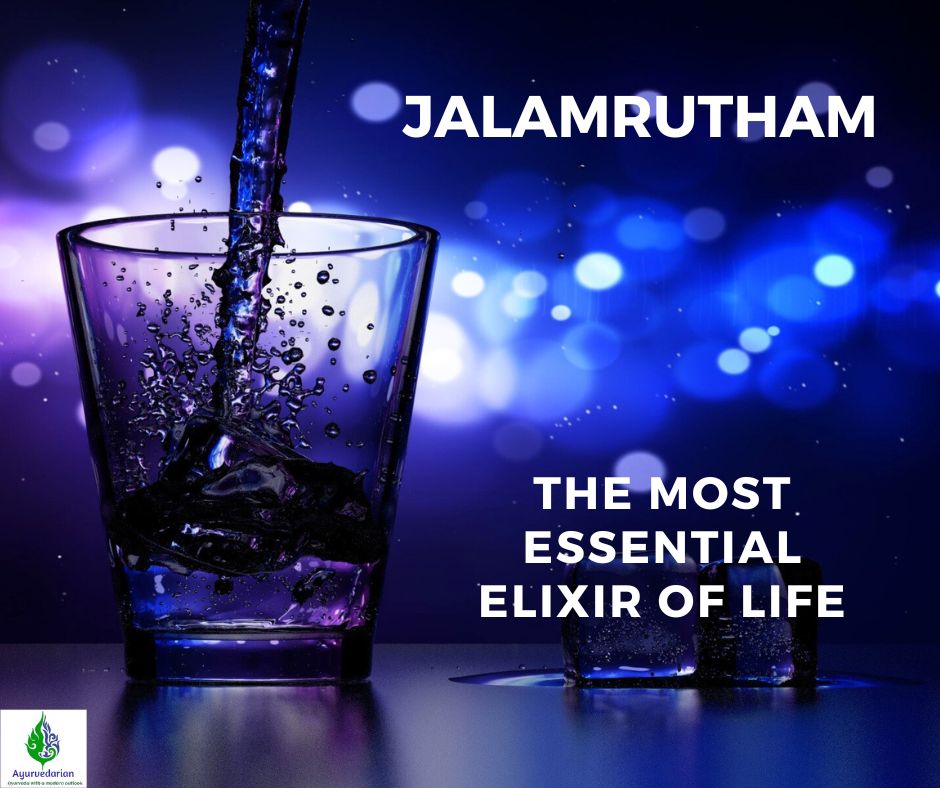?????? ??????? ?????? ??????? ????????? ?? ??????? ??????? ?????? ??????? ??????????-water gives life to all living things amd so donating water is one of the best donation. Our Earth is majorly made up of water. At least 70%of the...

?????? ??????? ?????? ??????? ????????? ??
??????? ??????? ?????? ??????? ??????????-water gives life to all living things amd so donating water is one of the best donation.
Our Earth is majorly made up of water. At least 70%of the Earth is covered with water. The role & function of water in the ecosystem is to provide the life blood to the community. It is a key element in sustaining life as it forms the functional building block that supports the biochemistry of all life on this Earth. Oxidane or water is a transparent, tasteless, colourless inorganic element. It is vital for all known firms if life though does not provide food, energy or organic micronutrients. Indian Nobel laureate Sir C V Raman calls water �the elixir of life�. Just like water up 2/3rds of the macro universe around us, water makes up 2/3rds of human body weight as well. Ayurveda, the science of life whose principles are based on the 05 basic elements or Panchamahabhutas, jala or water is considered as �jeeva'(life) and as an essence of elemental source. Ayurveda explains in detail various types of water, various sources and uses of water as well as the methods of usage of water. Let us know some about the same in this blog.
Water or Aqua forms a main link between the various ecosystems on the planet. It not only propels plant growth but it provides a permanent/temporary dwelling for different species of organisms on the earth. It provides nutrients and minerals necessary to sustain life and therefore it is the most important nutrient that all organisms need to survive. Water is not only essential as a nutrient but also as a means of transportation, dispersion and nourishment for various creatures on the earth. Absorption and assimilation of nutrients in plants or animals is aided by water.
As mentioned previously, our human body is almost 50-75% of water. Water is essential for different functions in the body but our body in a healthy condition cannot store water. So what are the uses of water in our bodies�some of them are as follows:
It helps to maintain the health and integrity of every cell in the body. it keeps the blood fluid enough to be able to flow through the smallest of capillaries in the body. it aids in the digestion, assimilation and absorption of nutrients in the body. it also helps the removal or excretion of toxins and waste products in various forms�faeces, urine or sweat. it maintains the health of various mucous and cell membranes in the body. it provides cushioning to the joints. it helps in all types of transportation in the body. the embryo/fetus is protected safely inside the amniotic sac which is made up of water with nutrients.A zero-calorie beverage, water is one of the best thirst-quenching and rehydrating elements for your body. The requirement for water varies for different people, depending on the season, environment, age, weight, physical and physiological conditions and so on. Nutritionists suggest that one should keep in mind that 20% of the total water consumption would be not from beverages but from water-rich foods like lettuce, leafy vegetables etc. On top of this, one should maintain the fluid intake and it will increase if alcohol, caffeine and spicy salty food are consumed. They also warn that it is very important not to allow the body to be dehydrated. Even just a 2% of water deficit can cause symptoms like fatigue, confusion, short-term memory loss, mood changes, depression etc., which can lead to UTI, kidney/gall stones, constipation and other serious illnesses.
Modern nutrition mentions types of water which include tap water (safe if properly treated & purified), spring water (generally healthy and safe), mineral water (fortified water), alkaline water (pH 8 to 9.5-one of the healthiest water), distilled water (medical uses only) & so on.
Now let us look at Ayurvedic viewpoint on water or Jala:
Ayurveda is an ancient holistic science that has taken its principles from the macro universe which is made up of the 05 basic elements or the Panchamahabhutas. �Jala� is the third of the Panchamahabhutas and as the central element, it naturally helps in combining or facilitating bonding of the other 04 mahabhutas to form living useful organisms. �Jala� is known as �jeeva� in Ayurveda. �Jeeva� means �life� which signifies its importance in maintenance or sustenance of life in all living organisms.
�Jala� or water is known by different names in Sanskrit like-Paniya-what which is intended to be drunk, Salila-good, Nira-clear liquid, Kikala-heavenly drink, Payasa/aap-nurturing like milk, Jeevan-which gives life, Amruta-elixir or nectar, Ambu-received from the clouds, Patya-wholesome or diet for everyone, & so on. ????????????????- substance which gives life to Earth.
Ayurveda literature mentions different types of water based on the source:�Antariksha jala or divya jala & Bhouma jala.
Antariksha jala�Water received from the sky and clouds is called antariksha jala or divya jala (divine water). It is supposed to be pure, tasteless and equal to elixir or nectar (amruta). It also nourishes and satisfies the body while aleviating tiredness, insomnia, thirst, burning sensation, etc.,
Antariksha jala is further divided into 04 types depending on its form -Dhara (rainwater), Kaara (hail stones), Thaushara (Fog) & Haima (snow). Dhara jala or rain water depending on its quality or the pollution level in the environment is classified as Gangaa (pure& consumable) & Samudra ( unfit for consumption & acidic). Aindra jala is the rain water collected before it reaches the Earth & is said to be the purest form of water fit for direct consumption. Kaara jala water in the form of hail stones. Toushara jala is dew or fog which falls at the end of the night. Haima jala is the water in theform of snow or ice.
Bhauma Jala �water after it comes in contact with the Earth is known as bhoumajala. Depending upon where the water get collected, bhauma jala is divided into kaupa (well), nadiya (river), sarasa (lake), tadaaga (reservior), prasravana (waterfall), chauntya (shallow), oudhbhidha (springs). The quality & properties of various bhaumajala changes according to the land or area it comes in contact with.
Ayurveda mentions that water which is fit for consumption should be Nirgandha (odourless), avyaktarasa (unmanifested taste), trishnaghna (quenches the thirst), suchi (clean & pure), sheethala ( cold), accha (clear), laghu (light), & hridya ( palatable).
But in the present day natural availability of such water is not possible. The environmental pollution, seasons, and also land (area where water is collected or stored) plays a huge role in changing the properties of the water. Depending upon the predominance of one of the mahabhutas the water can be amla or l�vana or mDhura or tikta katu or even kashaya rasa pradhana. The properties of water also changes according to the ritus/seasons making it heavy, sweet in rainy/varsha ritu or light, slimy in sharad /autumn or oily, heavy, nourishing in hemantha (late autumn), or light, kapha vata hara in shishira (winter), or astringent, sweet & dry in vasantha (spring), & anabhishyandhi or free flowing in greeshma (summer).
Since the properties and taste of water varies according to its source and season, in the macro universe, when consumed it as varied effcet on the doshas of the body/microuniverse as well. Ayurveda provides a detailed description of the affect of various types of water according to sources and seasons. I am not going into these details. After describing the various affects of different types of water on the body, Ayurveda mentions that rain water collected properly & methodically & water from hot/cold springs deep in the nature are ideal sources of water for all seasons.
Even though , the levels of pollution was not as severe as the present time, Ayurveda mentions different types pollutants that can contaminate water. Ayurveda mentions environmental pollutants as well as ,man made pollutants. In the modern times, water is polluted by several air and water pollutants which change the properties of water sometimes making it poisonous as well. Ayurveda has provided different types of purification methods so that the water can be made portable.
The next important aspect Ayurveda mentions is about the right ways or rules for consumption of water in general and in specific conditions as well. Ayurveda works on the principle of balancing the tridoshas in the body-vata, pitta, kapha. Whether these three are in balanced or imbalanced state , consumption of water does have an effect on them. The 03 basic rules are, for vata dosha imbalance or vata prakriti persons- luke warm water should be had 1hr after meals, for pitta imbalance or pitta prakriti persons- normal room temperature water can be had at any time of the day, for kaph imbalance or kapha prakriti persons- hot /lukewarm water before meals is beneficial.
In addition to dosha based rules fordrinking water there are some general rules which when followed help to maintain health and wellness.
Timing is important: Ayurveda advises Ushapana � drinking water the first thing in the morning helps to detox & eradicate illness. It also improves digestion and metabolism. Other than this Ayurveda says lukewarm water to be had before meals, normal water along with the meals. It is mentioned that consuming water immediately after food disrupts the digestion process thereby making it poison. Temperature of the water: Ayurved advises consumption of luke warm water or boiled and cooled water at room temperature. Drinking ice cold water or fluids is prohibited in ayurveda. Ushnodaka is the best form of water advised by Ayurveda. Water boiled , reduced and cooled is what is suggested. Ayurveda goes into the details like:- water boiled and reduced upto 3/4 is good for vata dosha, water boiled and reduced upto 1/2 is good for pitta dosha ,water boiled and reduced upto 1/4 is good for kapha dosha. Ushnodaka reduces kapha, vata, fat, improves digestion, cleanses the body and also relieves kasa, swasa, jwara etc. Method or utensil for storing drinking water- Ayurveda advises that clean and fragrant water with herbs or flowers should be consumed in gold, silver, copper, bronze, stone or mud utensils. Water should be stored in a clean place in mud or copper utensils. Ayurveda also suggests the usage of kataka, or cloth or pearls or precious stones which can be used for filtration and preservation of water. Sit & sip- Do not chug �Ayurveda advises that water should be consumed while sitting and should be sipped slowly. One should not just gulp large quantities of water.Water is a necessity for the body. It is essential and when deprived the body will show severe dehydration symptoms. So it is very very essential that one should drink water whenever the body needs it especially when thirsty. Trishna or thirst in Ayurveda is considered as adharaneeya vega or an urge which should not be withheld or controlled. So if thirsty sip some water.
Vedavyas Maharshi in Mahabharatha that:
??????? ???? ???? ??????? ????? ??????? ?????? ???????? ?????????????? ???????? ?????????? ????? ??????? ?????? ?????????
Water is the best elixir, water is life, and water gives satisfaction to the person who drinks or who donates it. Give a glass of water to a thirsty living thing, plant, animal, or human, and look at how rejuvenated it feels. It soothens the soul and provides one with divine pleasure.
Drink, Save, Give & Conserve the Elixir�as of now available on EARTH!!!!!






